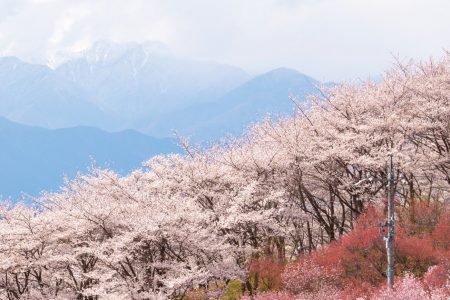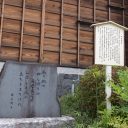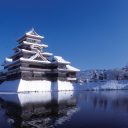
There is a saying in Japanese, “Bon to Shōgatsu ga isshoni kita yoo da(盆と正月が一緒に来たようだ)”, “it’s like Bon and New Year’s came at the same time”, meaning either it is very busy, or events to celebrate are happening at the same time. These two events where family members all gather in one place, Shōgatsu (New Year) and Bon (ancestor worship event), are indispensable amongst all the regular annual events in Japan. Roughly speaking, half of the big events of the year concern the New Year and the other half, Bon. Bon is usually affectionately referred to as O-bon.
When is O-bon?
Originally, both Shōgatsu and O-bon were held in accordance with the lunar calendar, but since the 6th year of the Meiji period (明治6年 / 1873), New Year’s events have been observed according to the Western calendar. However, there are many areas in Japan where O-bon, a “seventh month” event, is observed either according to the lunar calendar, or else is postponed for a month until the 15th of August because of the busy farming schedule in July.
Significance of the two events
Up until the beginning of the Meiji period, apprentices serving in shops or working in manual labour jobs were able to get time off and return to their homes just twice a year – on the 16th day of the New Year and on the 16th day of O-bon. Nowadays, 5 working days in a week are the norm, but few people use their weekends to return home to their family. At New Year’s and O-bon, however, one has only to observe how greatly JR (Japan Railways) increases its train services, airline companies increase their flights and bus and rent-a-car companies adjust their services to accommodate more passengers. Such is the extraordinary importance of New Year’s and O-bon. At New Year’s and O-bon, why is it that people feel they must return home, even to the point of purchasing tickets a few months ahead, or spending many uncomfortable hours in a packed train, bus or plane? Even if you were to ask Japanese people, they would probably be at a loss for an answer. At any rate, come New Year’s and O-bon, the homing instinct rages over the Japanese Islands like a storm.
Origin of O-bon
Setting aside New Year’s, we turn our attention to O-bon. The word itself comes from the Buddhist word urabon (盂蘭盆), meaning the Bon Festival. But most parts of O-bon are purely Japanese in origin. O-bon was not a Buddhist observance in the beginning. It could be considered that Buddhism became accidentally linked with the traditions of the ancient Japanese Mitama Matsuri (御霊祭). Mitama is a Japanese God’s spirit and Matsuri is a festival. So, contrary to the widely believed common notion of “O-bon is a Buddhist ritual”, it is more likely to be a Shintō (神道) ritual.
O-bon rituals
On the 13th of August, more common nowadays, people light a mukaebi (迎え火) in front of their homes to welcome the spirits of their ancestors. They then try to cheer the spirits of the dead by offering them various delicious foods and drinks. On the 15th or 16th day, they light okuribi (送り火) in front of their homes to see the spirits off again. These rites vary in form from one locality to another, but everywhere there is the consistent idea that for a few days the living entertain their ancestors, or in other words, that the living and the dead have a reunion. Thus, if one thinks of the fact that O-bon is a chance for ancestors and offspring (who are, in a broad sense, parent and child) to have a friendly get-together, then the great nationwide migration of the Japanese people, driven by the homing instinct, begins to make sense.
Bon-odori (盆踊り)
Bon-odori means “Bon dance”. It used to be held on the night of the 16th in the premises of a shrine or a temple. It has been believed that the dance depicts those who have been spared from being tortured in hell. Therefore, most Bon-odori is held in summer after O-bon throughout Japan in various forms and music. However, recently, there have been many communities which organise new types of Bon-odori to entice people to head back to and gather in their hometowns. Some of the Bon-odori performances in different localities have become so famous that many people travel to appreciate the performances throughout Japan.
Author
Shunichi Ikeda
BAS Hons (ANU)
MEd (SUNY at Buffalo)
Visiting Fellow, ANU College of Asia and the Pacific











